Integrating AI with Existing Systems: A Smooth Path Forward
Artificial intelligence can redefine how your organization operates—but it doesn’t require bulldozing the legacy platforms that still run the business. In this playbook, we’ll show you how to audit your current stack, pilot AI in low-risk zones, layer in middleware for seamless integration, and integrating AI with existing systems—so modernization feels evolutionary, not disruptive.
Key Takeaways
Audit Before You Act
Chart every system and data flow to reveal the most natural AI touchpoints—and avoid surprises down the line.
Pilot Where It Pays
Pick one or two high-value use cases and prove them in a controlled setting before you scale a single line of code.
Bridge with Middleware & APIs
Insert an integration layer that lets legacy platforms talk to AI services—so you modernize without a wholesale rewrite.
Iterate, Don’t Overextend
Start small, learn fast, expand in measured steps. You’ll control risk, rein in costs, and keep stakeholders onside.
Architect for Evolution
Design the stack so you can swap components or bolt on new AI capabilities as the tech—and your business—advances.
The Integration Conundrum
Seasoned IT leaders know the pain: yesterday’s mission-critical platforms were never architected for AI. Many lack clean APIs or are so deeply customized that even a simple data handshake turns into a multi-week workaround. Meanwhile, the competitive clock is ticking—rivals are already layering AI onto their processes and elevating customer expectations. The challenge is to fuse next-gen intelligence with legacy stability: deliver cutting-edge features without pulling the rug out from under the workflows that keep revenue flowing.
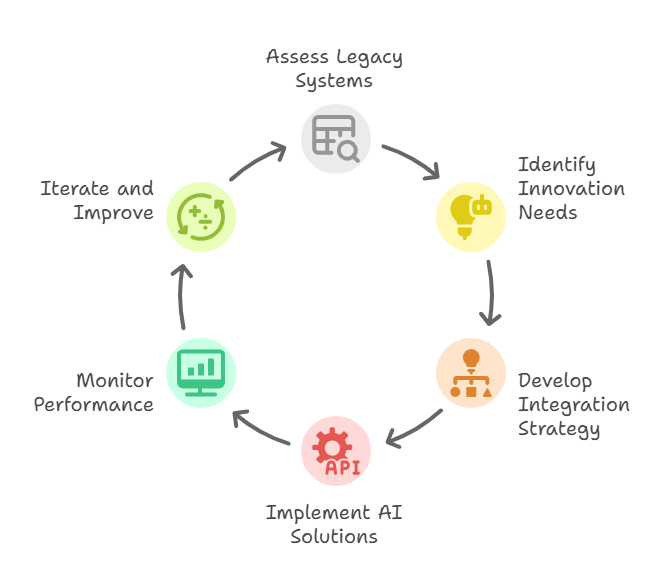
Furthermore, treat integration as a strategic craft, not a bolt-on hack. Instead of wedging AI into the heart of your ERP and risking downtime, wrap the intelligence in a purpose-built interface layer. This buffer cleanses data, enforces security, and routes requests—letting legacy apps run untouched while AI quietly delivers the lift behind the scenes.
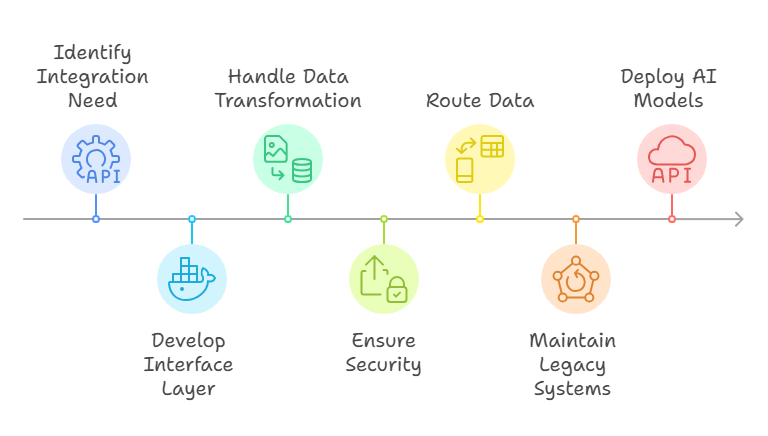
The Pain of Disrupting Established Workflows
Hesitation is justified when revenue-bearing systems are on the line. In tightly regulated sectors like healthcare and finance, even an hour of unplanned downtime bleeds revenue, erodes customer trust, and invites compliance scrutiny. Worse, “quick” bolt-ons often expose hidden dependencies and archaic data formats, transforming a simple upgrade into a runaway cost center.
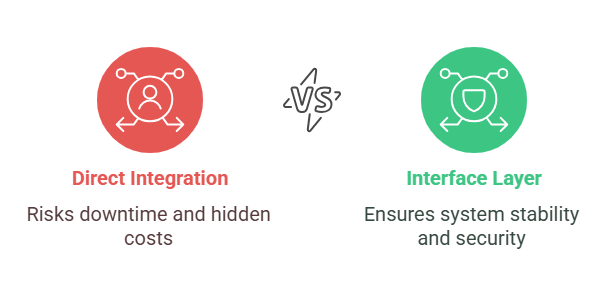
Charge ahead without a roadmap and you’ll end up in one of two disaster zones: analysis paralysis that freezes progress, or a rip-and-replace free-for-all that sparks stakeholder panic. Both are non-starters. The real play is a pragmatic middle path—layering AI through modular interfaces that unlock new value while your proven systems keep humming.
A Step-by-Step Integration Approach
Follow these phases to integrate AI smoothly:
Audit Your Environment
Start with a forensic system map. Catalog every mission-critical platform, tracing the data inputs, outputs, and handshake points—whether they’re flat-file exports, direct database connections, or SOAP/REST services. That x-ray view reveals the low-friction sockets where AI can plug in without rattling the rest of the machine.
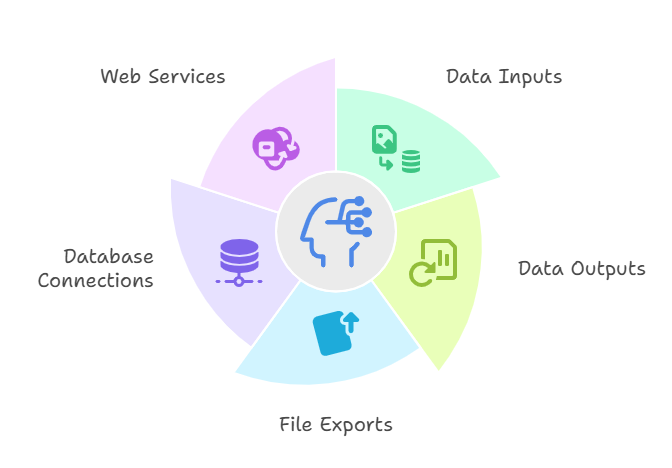
Define High-Value Use Cases
Zero in on use cases with unmistakable ROI: automated ticket-triage that trims response times, demand forecasts that right-size inventory, or analytics that flag trouble long before it hits the P\&L. Keep the aperture tight at first—fewer moving parts, faster proof, and far less risk of runaway complexity.
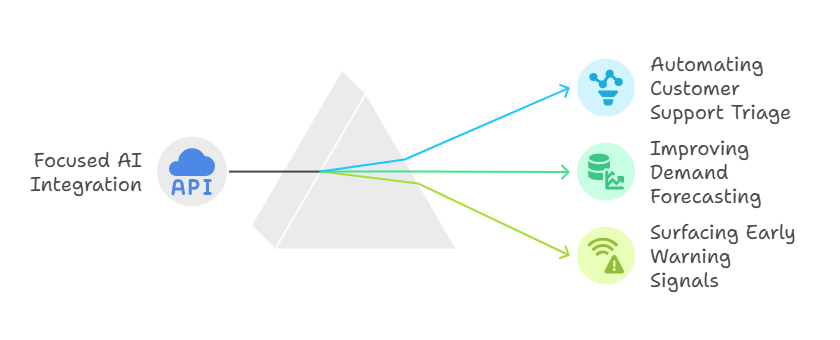
Introduce a Middleware Layer
Stand up an enterprise-grade integration platform—or API gateway—that acts as a universal translator, converting legacy data formats into the modern protocols your AI services expect. This decoupling keeps mission-critical systems stable while letting new intelligence flow freely.
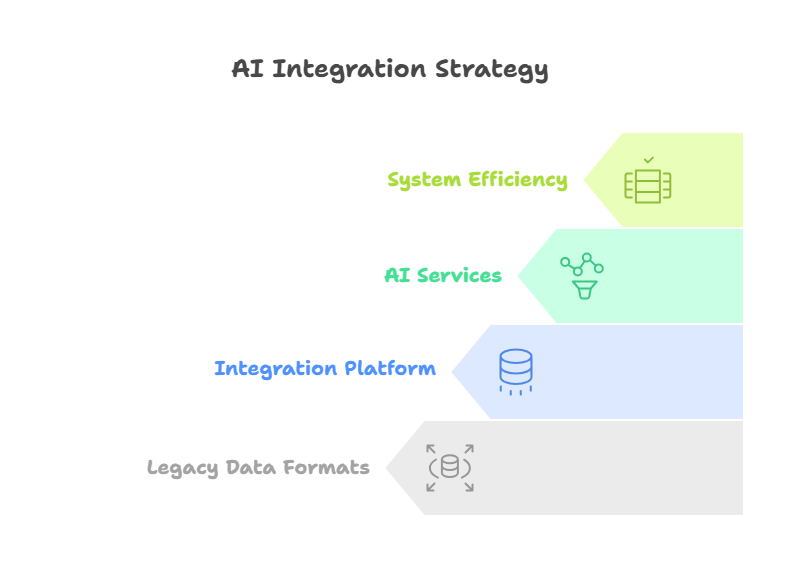
Pilot in Isolation
Start with one team. A tightly scoped rollout exposes data mismatches and performance bottlenecks early—long before they can ripple across the enterprise.
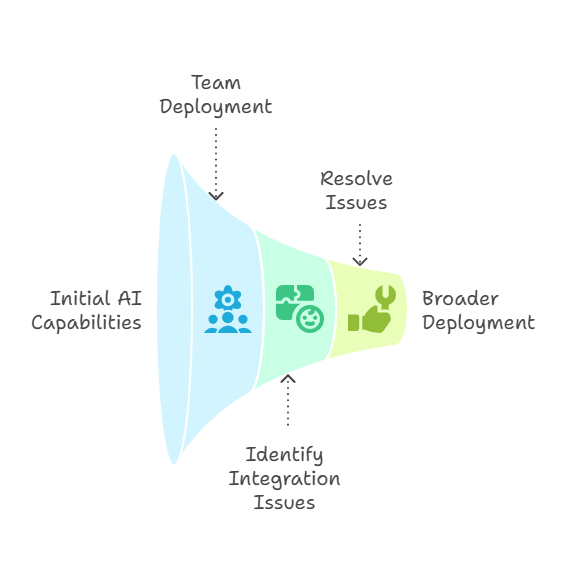
Iterate and Scale
Tighten the code—refine integration scripts, harden error-handling, and streamline workflows based on pilot feedback. Then scale horizontally, onboarding new teams while tuning monitoring and support in lockstep.
Case Study: Healthcare Risk Scoring
A mid-sized hospital network aimed to predict high-risk patients but was hamstrung by a decade-old patient-management system. Here’s how they delivered AI-powered results without touching the legacy core:
Audit the Landscape
They discovered nightly batch exports—CSV files dropped at 2 a.m.—that already contained the vitals, lab results, and visit histories a risk model would need.
Define a Laser-Focused Use Case
Rather than boiling the ocean, the team zeroed in on a single metric: reducing 30-day readmissions for high-risk patients.
Insert a Middleware “AI Sleeve”
An API wrapper ingested the batch files, ran cloud-based risk-scoring models, and pushed the results to a lightweight dashboard—no invasive surgery on the core system required.
Pilot in One Department
Launching in the cardiology unit surfaced real-world wrinkles—data-format quirks, alert-threshold tuning—that were ironed out long before enterprise rollout.
Scale and Evolve
With the kinks resolved, they expanded to every department and began shifting from nightly batches to near-real-time feeds as infrastructure modernized.
Within three months, readmissions dropped 20 %—all without a costly rip-and-replace. By treating integration as a strategic discipline, the hospital unlocked AI’s value while its legacy system kept the lights on.
Conclusion
Integrating AI with existing systems doesn’t have to be a monumental upheaval. By auditing carefully, selecting targeted use cases, introducing middleware, piloting in isolation, and scaling iteratively, you can enhance legacy workflows rather than disrupt them. Embrace AI’s power without tearing down your foundations—integrate smartly, and watch your business thrive!
Ready to start integrating?
Download the integration checklist now to begin your roadmap, or reach out for a tailored assessment that ensures your AI integration is both smooth and impactful.